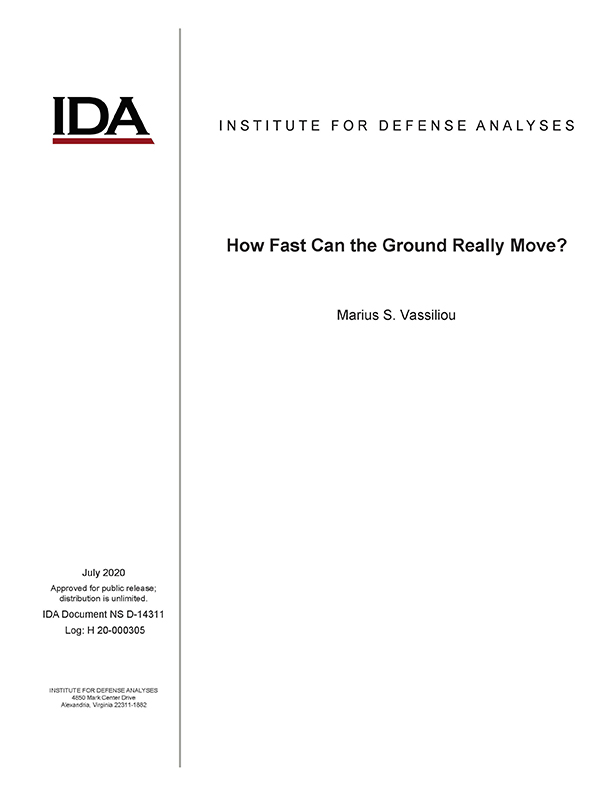How Fast Can the Ground Really Move?
July, 2020
IDA document: D-14311
FFRDC: Systems and Analyses Center
Type: Documents
Division: Science and Technology Division,
Science, Systems and Sustainment Division
Authors:
IDA document: D-14311
FFRDC: Systems and Analyses Center
Type: Documents
Division: Science and Technology Division
Authors:
Authors
Marius Vassiliou
See more authors

